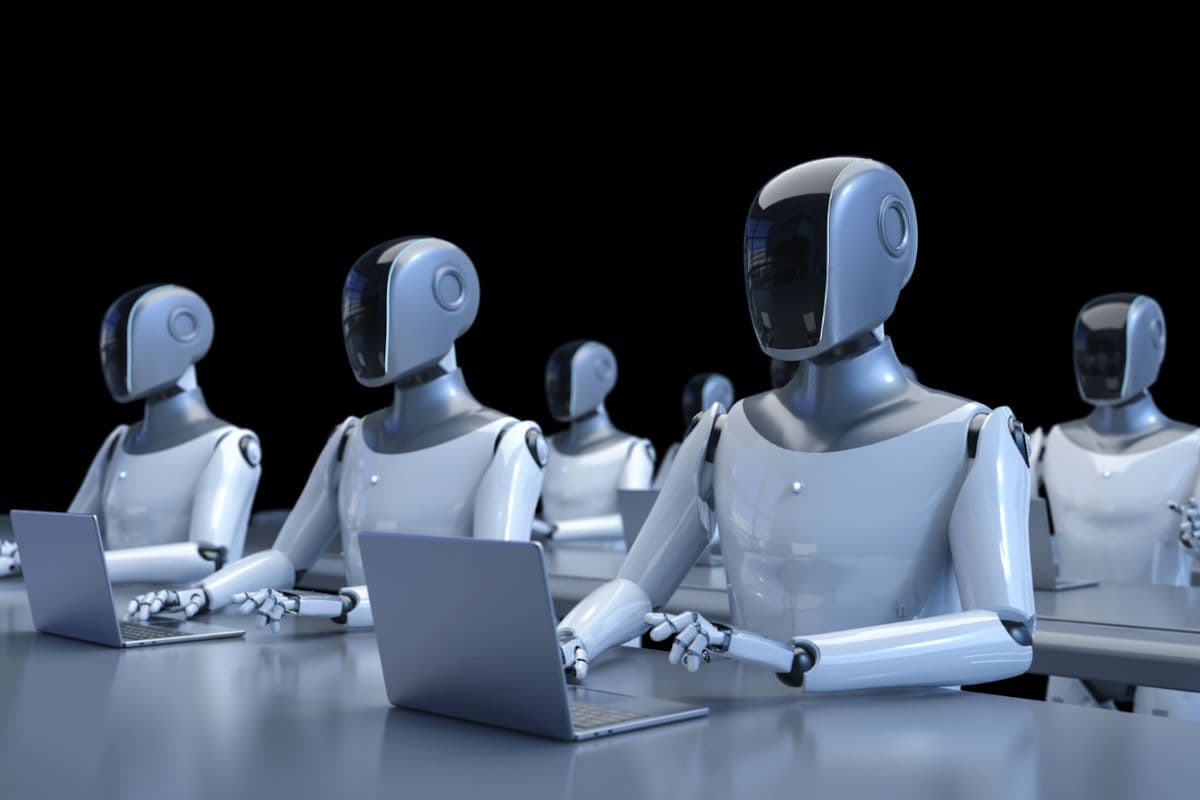If you’ve ever used an AI (Artificial Intelligence) platform to create something (like a blog article, social media post, or even an image), you’ll already know that it’s now shockingly easy to create new content at pace.
Of course, this is great news for your productivity and targets. But when it comes to who actually owns what you’ve created with the help of AI… the waters get a bit murky.
In this article, we’re getting to the bottom of who owns AI-generated content, starting with unpacking all the court cases and copyright laws shaping AI ownership in 2025.
We’ll also share a few best practices for teams already using AI in their day-to-day workflows.
TL: DR – Who owns AI content in 2025? The courts say no human = no copyright.
Key Takeaways
- In 2025, purely AI-generated content has no copyright protection; human input is essential for ownership.
- U.S. law grants rights only when humans meaningfully edit or transform AI outputs.
- AI platform terms vary—some claim partial rights to outputs, so always review contracts.
- Businesses should humanize AI drafts to meet copyright standards and improve SEO rankings.
- Tools like Undetectable AI help verify originality, humanize content, and safeguard compliance.
Why AI Ownership Questions Are Critical in 2025
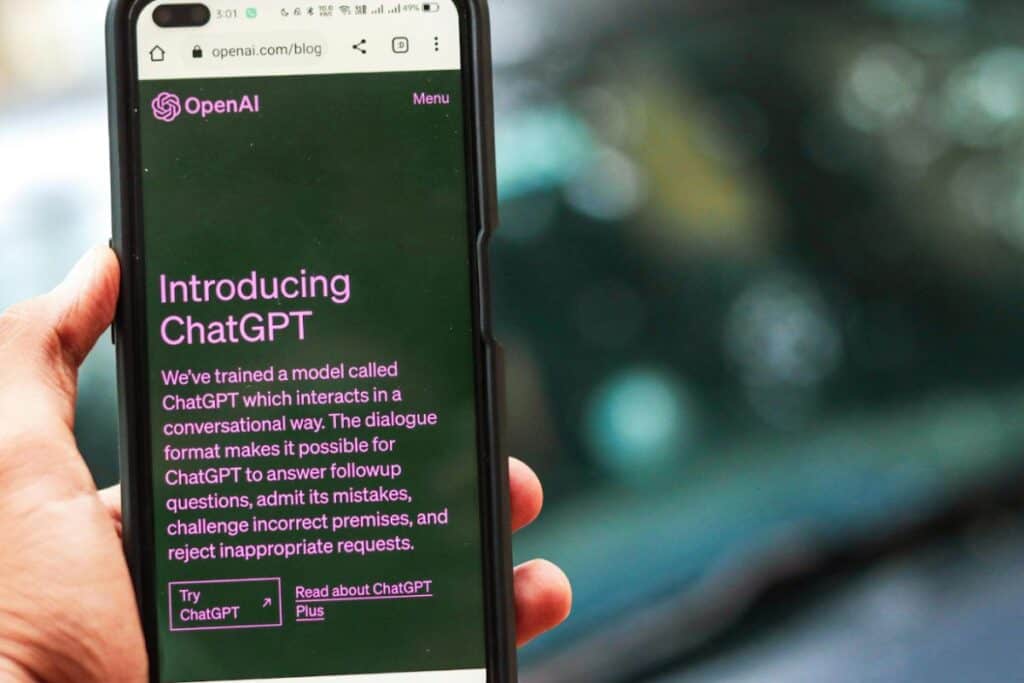
Imagine you’ve always wanted to write a book.
You have a rough idea of an outline, but you’ve never had the time to sit down and actually write.
But now, with the help of a generative AI program (like ChatGPT), you can flesh out all your ideas in a matter of hours without having to quit your day job.
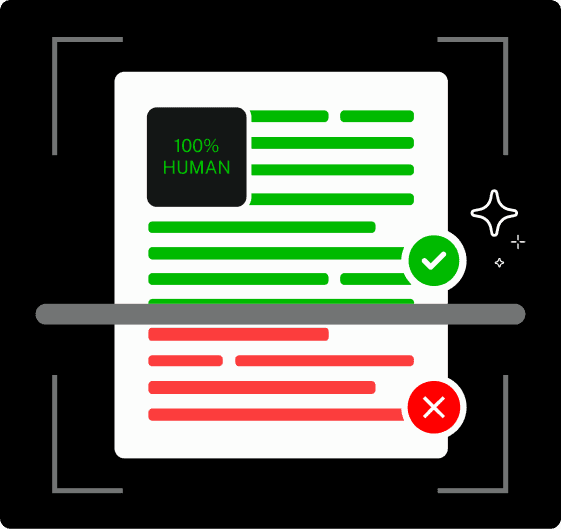
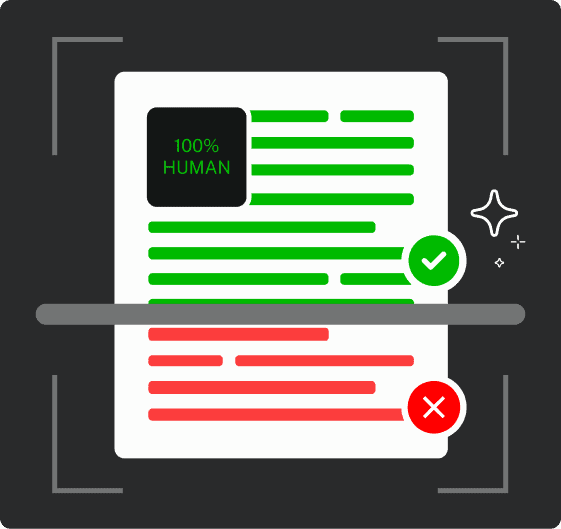
Never Worry About AI Detecting Your Texts Again. Undetectable AI Can Help You:
- Make your AI assisted writing appear human-like.
- Bypass all major AI detection tools with just one click.
- Use AI safely and confidently in school and work.
Sounds great in theory. But here’s the catch: when that book goes to print… do you own the rights to it?
What does the law actually say about your ownership rights if you’ve used AI in your creative process?
The issue becomes even more complex when businesses start integrating AI into different workflows, like marketing or product design.
Does a company technically have ownership rights of a product if it was developed with AI? Can a brand claim exclusive rights over a campaign if it used ChatGPT to develop the copy?
Without answers to these questions, the entire AI market is on the edge of a cliff.
Because if artists, creators, and companies don’t have any confidence in their ownership rights when using AI, they may not see the point in using any AI models at all.
The Legal Landscape of AI Content Ownership
From a legal point of view, the conversation around AI-generated content is tied to intellectual property frameworks (like copyright laws and patent law).
These frameworks were designed long before generative AI technology came onto the scene, and so courts across the world have been trying to catch up.
Current Copyright Law and AI-Created Works
Under traditional copyright law, only works created with clear human authorship can qualify for copyright protection.
This means that purely AI-generated outputs (without meaningful human edits) are not entitled to any legal protection.
U.S. Copyright Office’s Stance on AI Content
In the United States, the US Copyright Office has been hard at work examining current copyright law and how it can work with new AI technologies.
Since then, the copyright registration guidance has taken two key positions on AI-generated content:
- Work created by humans using AI-generated material is still protected by copyright law.
However:
- Purely AI-generated material, or material with ‘insufficient human control’, does not qualify for protection under copyright law.
In short, if you use AI and want ownership rights of whatever you produce, you still have to use your brain and human creativity to shape the final product or ‘output’ created by AI.
EU and International Perspectives on AI Ownership
The EU and other regions have experimented with different approaches. For example, the AI Act has set new standards for AI regulation.
However, the main focus in the EU has been on the regulation of the materials AI companies use to train generative AI models, with no clear regulations or guidance yet on how the ownership of the outputs is handled.
Some countries are even considering hybrid systems of legal protection. In this case, human authorship combined with AI technology could potentially qualify for copyright protection.
However, this is likely to vary on a case-by-case basis.
Who Holds the Rights to AI-Generated Content?
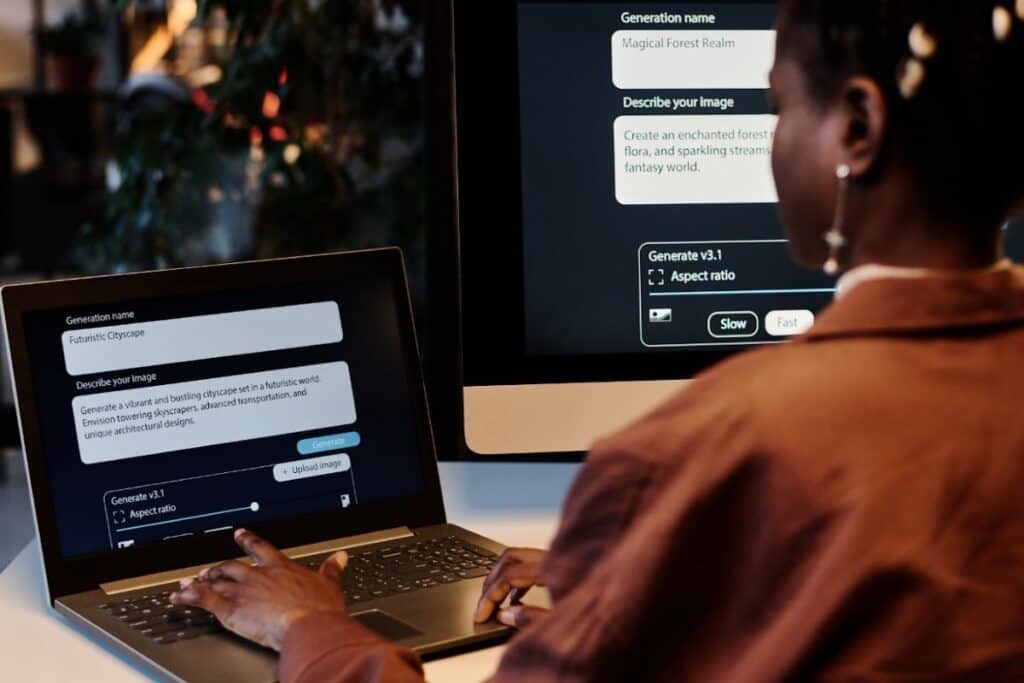
The laws are still catching up with the pace of AI technology.
Here are some examples of how copyright law is likely to work in different scenarios.
The AI Tool Creator (Software Company)
If you take the time to read the fine print on your AI tool, you’ll find that some enterprise-level artificial intelligence platforms claim certain rights over their AI-generated content.
The argument is that because they developed the AI models in the first place (and invested heavily in training data and technology), they should also have ownership of the outputs.
You’re most likely to find this terminology in the Terms of Service or Terms and Conditions, where it’s common to see an AI platform say they reserve partial, or even full ownership, of all AI outputs.
So in this scenario, unless you negotiate custom terms, your outputs are not technically “yours”.
The End User Who Provided Prompts
Many platforms (especially open source software models and those operating under a capped profit structure) assign ownership rights to all users by default.
This is OpenAI’s policy (aka the developer behind ChatGPT), which states the following under the ‘Ownership of Content’ section in the Terms of Use:
- “As between you and OpenAI, and to the extent permitted by applicable law, you (a) retain your ownership rights in Input and (b) own the Output. We hereby assign to you all our right, title, and interest, if any, in and to Output.”
This means that when you use ChatGPT, you own everything you put in as well as everything you get out.
Shared or Joint Ownership Scenarios
The topic of ownership gets even more complicated when it comes to collaborative products.
A common scenario for this could be if one party provides the data and GPT prompts, and another party refines the material generated. In this case, ownership could be shared.
This is why clear contractual arrangements are always a good idea if you plan to collaborate with another person or company on a project involving AI.
When Content Is Considered “Public Domain”
Outputs that are produced entirely by an AI system, with no human input, are considered part of the public domain.
This means they are not protected by copyright law, and so they can be freely used by anyone.
For businesses and creators, this makes it even more important to understand the role of human involvement when creating new content with AI.
If you can’t demonstrate that you’ve transformed, adapted, or edited your AI outputs, your content may not qualify for copyright protection.
Key Legal Cases and Precedents
So what have the courts actually been saying about AI? Here are a few notable cases and outcomes.
- Thomson Reuters v. ROSS Intelligence – ROSS’s argument of fair use was rejected by a US federal court, setting the precedent that you can’t use copyrighted material to train AI for direct commercial competition.
- Bartz v. Anthropic – Several book authors sued Anthropic (the company who owns Claude AI), arguing their books were used without permission to train Claude’s AI models. A federal court ruled that training AI on lawfully obtained books counts as fair use because it is “transformative”.
- New York Times v. OpenAI – The New York Times sued OpenAI and Microsoft, claiming their copyrighted articles were used without permission to train AI models (like ChatGPT). This case is still ongoing and raises questions about whether content owners should be compensated if their work is used to train AI models.
Even though there are still a lot of unanswered questions, the main sentiment in the courts (as of now) is that if you want ownership of your content, you can use AI to create it.
But you have to make sure that you’ve put your own personal stamp on it.
Business and Marketing Implications

Lots of companies and marketing teams have already hit the ground running with AI, embracing everything it’s got to offer.
But, it’s important to remember that: If your company wants ownership and copyright of any materials created with AI, you need to make sure the content has been edited and transformed enough to constitute ownership.
However, you can’t always track the workflows of every single member of staff or freelancer who writes blogs for you.
This is where an AI Detection tool (like our own AI Detector) comes in handy, as it allows you to verify all outsourced and submitted content before you claim ownership.
Another marketing concern is search engine rankings. For example, search engines like Google have been cautious about ranking AI-generated content that doesn’t have clear human involvement.
That’s why it’s important to give all the content on your website an added human touch by editing, restructuring, and enhancing any AI-generated content.
Practical Guidelines for Teams Using AI
If your company relies heavily on AI, now is the time to build clear policies around authorship, compliance, and originality.
This is absolutely essential for safeguarding your business’s intellectual property.
Here are a few practical guidelines for teams using AI:
- Always add a human touch. Never, ever publish a raw AI output. Encourage your writers, designers, and marketers to refine drafts so that the final material looks and feels human.
- Refine drafts with helpful tools. Tools like the AI Stealth Writer can help you spot content created by AI content generators, or at the very least, help you identify high-risk text that might need a second look. AI Humanizer tools can also help you transform raw AI drafts into natural, more human-sounding content, which can lighten the load during the editing process.
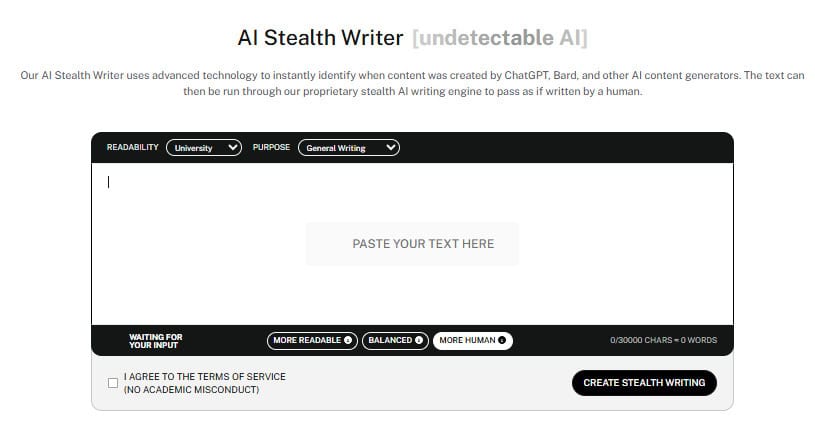
- Document the creative process. In case of disputes over whether your original work is actually ‘original’, make sure to keep track of all prompts, edits, and decision-making to prove authorship.
- Provide AI Training to staff. AI is still very new, and some staff may not quite understand how to use it at work. Put together some AI usage policies for your team, making sure to update and communicate those policies regularly.
- Put everything in a contract. If you use AI while collaborating with different companies, make sure to clarify up front what ownership will look like to manage expectations.
Ownership of AI-Generated Images, Video, and Audio
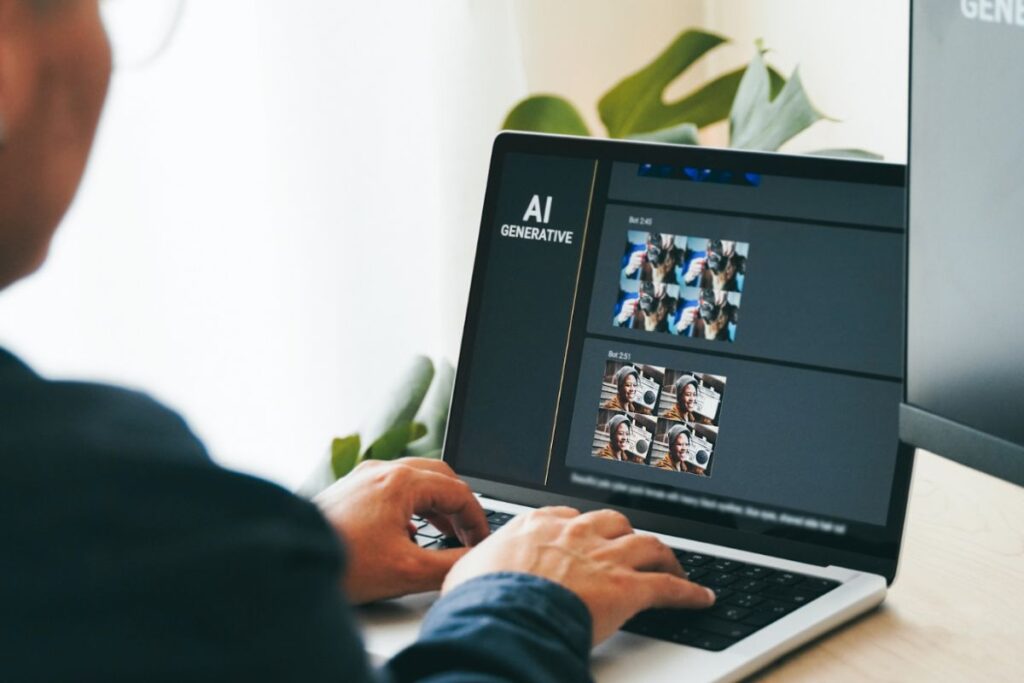
It’s also worth noting that any AI-generated images, art, videos, and audio should be treated with the same care as written content.
For example, if you use AI systems to create YouTube videos, logos, or ads, you may not technically have ownership of your content until you’ve made a reasonable effort to transform it and make it your own.
Deepfakes and Verification Needs
Deepfakes and synthetic AI-generated images are also a massive risk, with verification tools now becoming a key part of the content development process.
This is especially key for journalists and reporters who need to confirm that images are real before publishing a piece.
A great tool to help with this is our AI Image Detector, which can help verify the authenticity of images to prevent deepfakes from being published.
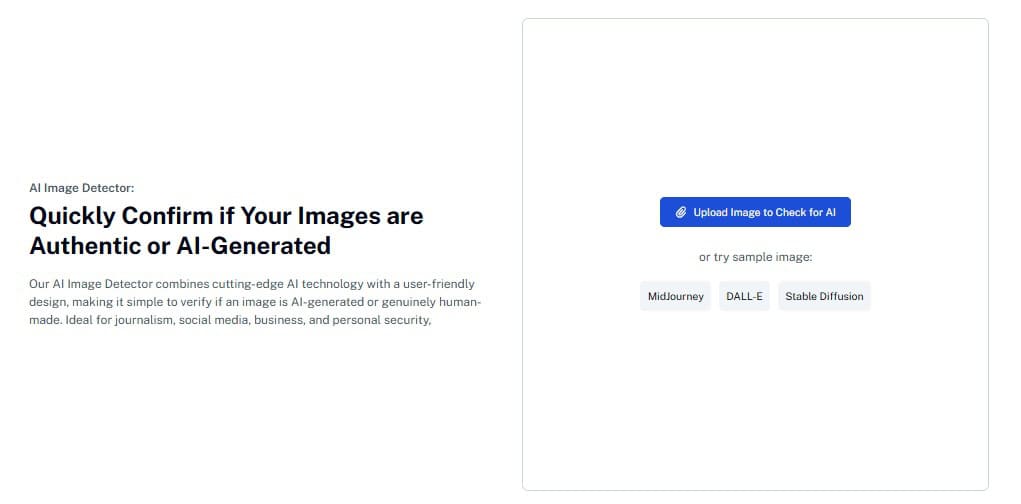
Alongside image checks, teams that work with interviews, podcasts or voiceover content also need a way to confirm that audio has not been synthetically generated or cloned.
Our Undetectable AI’s AI Voice Detector analyzes uploaded recordings for patterns linked to AI generated speech, so you can quickly spot suspicious clips before they are used in campaigns, training materials or reports.
This helps journalists, marketers and compliance teams keep spoken content accurate, trustworthy and aligned with internal AI policies.
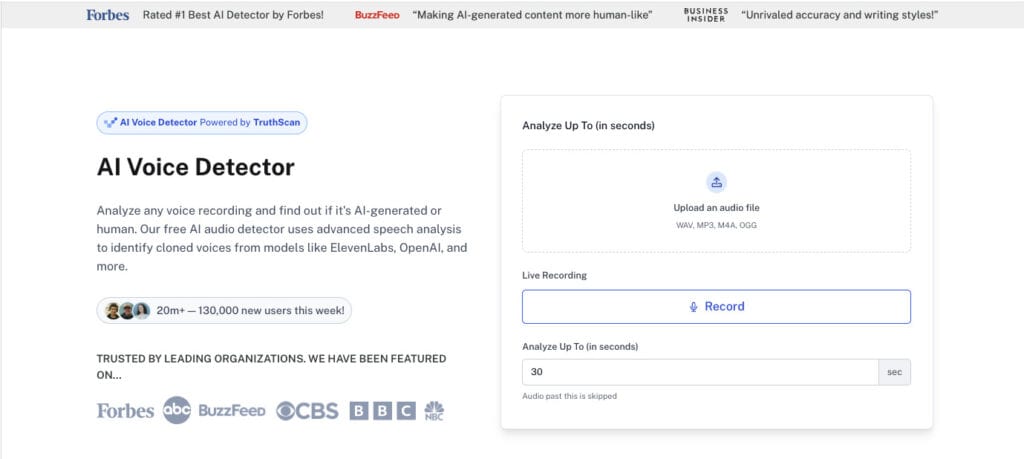
Undetectable AI as a Compliance Ally

As organizations continue to integrate AI into more and more workflows and processes, they need to use the right tools and put the right systems in place to keep content original.
Here’s how our tools at Undetectable AI can help with that.
AI Detector: Verify Originality and Authorship
Use our AI Detector to check if content was genuinely created by a human or if it was created by AI.
Grammar Checker: Human Contribution via Editing
Even small edits can help a piece of AI-generated content feel a bit more human.
Our Grammar Checker can help you get your spelling and punctuation just right so your content reads like it was written by an actual writer, not a robot.
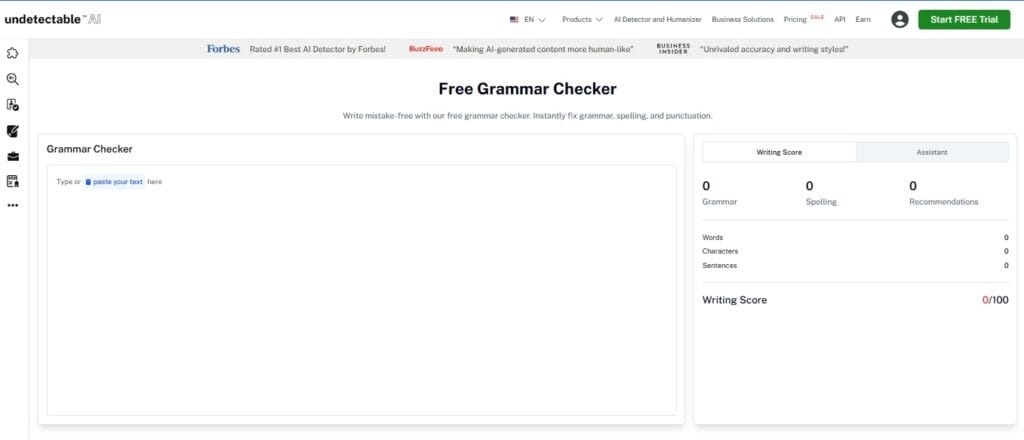
Plagiarism Checker: Confirm No Overlap With Human Works
AI systems learn from a vast amount of training data; it’s just how they work.
However, when you use AI tools to generate content, you also run the risk of unintentionally copying someone else’s content.
Our AI Plagiarism Checker can flag potentially plagiarized content, so you can double-check that your AI outputs don’t overlap with existing protected materials.

AI Humanizer: Strengthening Human Authorship
Let’s be honest, raw AI content can sometimes sound a bit strange. By using an AI Humanizer tool, you can refine AI-generated outputs to make them sound more natural.
This improves readability and helps your content feel more authentic.
Curious about our AI Detector and Humanizer? Try them in the widget below!
Frequently Asked Questions About Who Owns AI Technologies
Who owns OpenAI?
OpenAI is owned by the nonprofit organization OpenAI Inc. One of its biggest investors is Microsoft.
Who owns Perplexity AI?
Perplexity AI’s biggest investors are Jeff Bezos and Nvidia.
Who owns Grok AI?
Grok is a chatbot made by xAI, which is owned by Elon Musk.
Final Thoughts
Artificial intelligence has completely changed the way we can get creative.
But when it comes to being able to claim ownership of AI-generated materials, human creativity still reigns supreme in the eyes of the courts, copyright offices, and even search engines… at least for now.
The future of AI might look completely different. But for now, the safest strategy is to use AI as a tool, not a substitute.
Before you do, leverage Undetectable AI’s AI Image Detector to ensure originality.
Use the AI Stealth Writer for creating unique, brand-aligned content, and the Grammar Checker to keep everything polished.
Finally, rely on the AI Humanizer to make your text sound authentically human and the AI Plagiarism Checker to guarantee your work stays 100% uniqu
Start using Undetectable AI today to create content that’s both original and future-proof.
